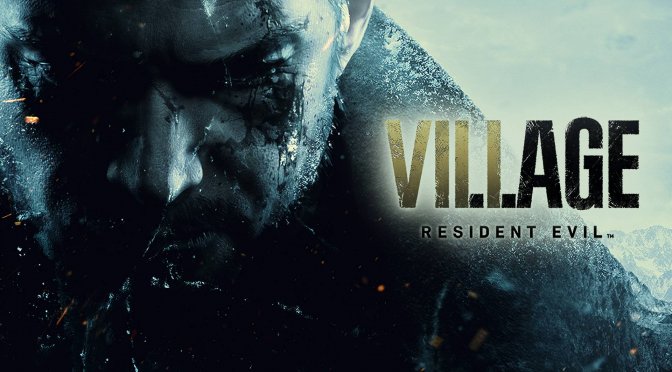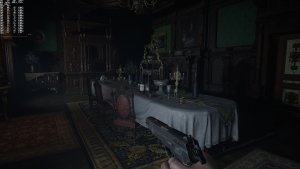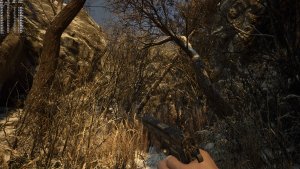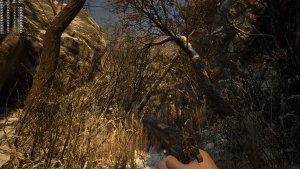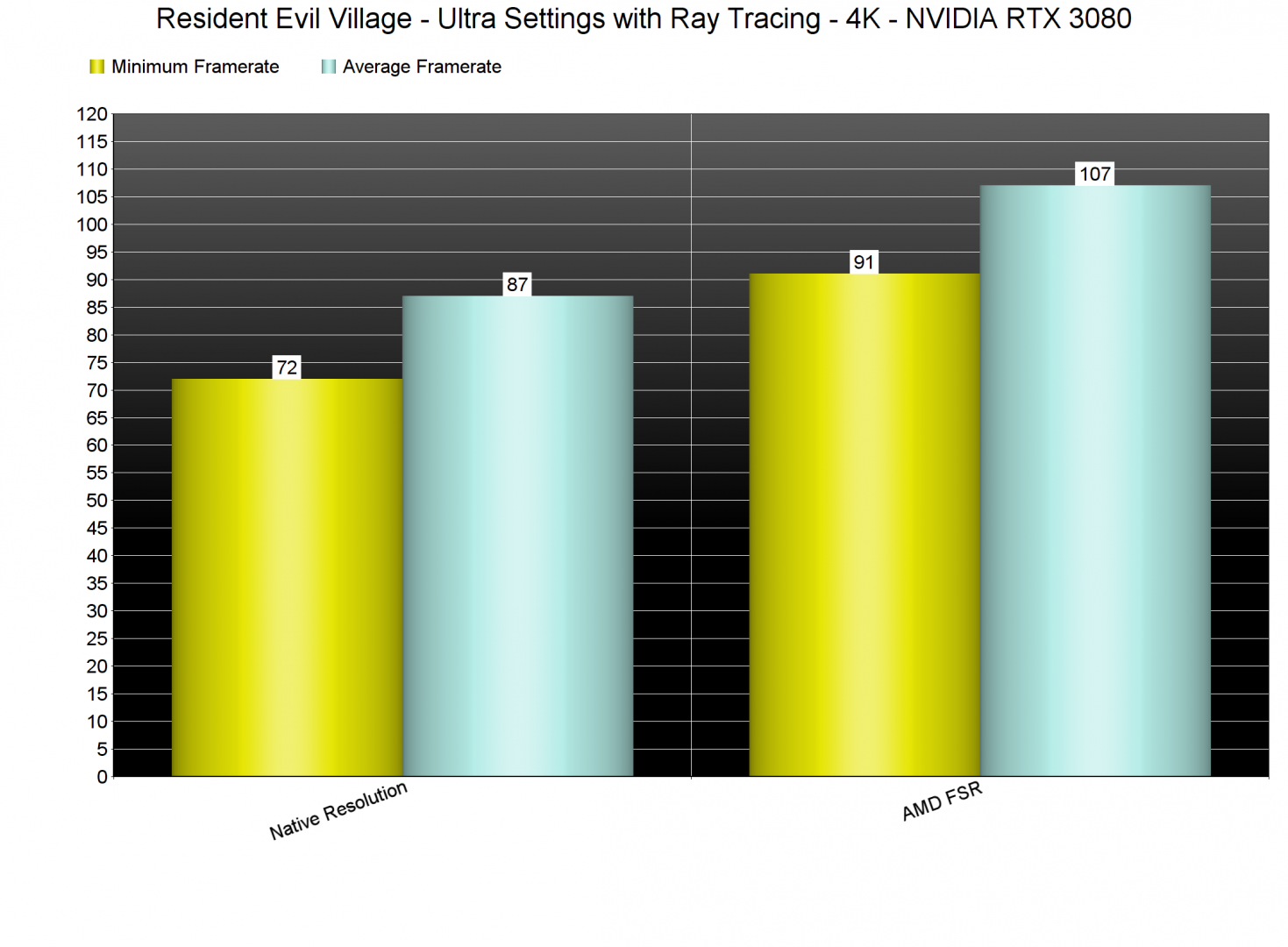As we’ve already reported, Capcom released the first PC patch for Resident Evil Village that adds support for AMD’s FidelityFX Super Resolution. As such, we’ve decided to benchmark it and compare it with native 4K.
In order to test AMD FSR, we used an Intel i9 9900K with 16GB of DDR4 at 3600Mhz, NVIDIA RTX 3080, Windows 10 64-bit, and the GeForce 471.11 driver.
For our tests, we used the Ultra Quality Mode for AMD FSR. This mode offers the best image quality, so that’s the one you should choose, even when playing at 4K. And, unfortunately, AMD FSR cannot come close to native 4K, even at its Ultra Quality Mode.
Below you can find some comparison screenshots between native 4K (left) and AMD FSR (right). As you can see, there is more aliasing in the AMD FSR screenshots. Not only that, but everything looks blurrier (and not as sharp as native 4K). You can easily notice this in the grass comparisons (third and eighth comparisons).
AMD FSR improved performance by 20fps on our NVIDIA GeForce RTX 3080. Still, we don’t really recommend using it. It makes more sense to dial back some other settings than to use FSR (which brings a “vaseline” effect to the whole screen).
These results were to be expected though. After all, AMD FSR is basically an upscaling technique with some sharpening and nothing more. In other words, it’s not a reconstruction tech like DLSS which can sometimes surpass native resolutions.
Lastly, and since this is a simple upscaling technique, our coverage of AMD FSR will be limited. We will be covering it in games that support both NVIDIA DLSS and AMD FSR. We will also be covering it in all the upcoming triple-A games that will launch with it. However, we won’t be covering it in older games or in newer games that get support for it via post-launch updates.

John is the founder and Editor in Chief at DSOGaming. He is a PC gaming fan and highly supports the modding and indie communities. Before creating DSOGaming, John worked on numerous gaming websites. While he is a die-hard PC gamer, his gaming roots can be found on consoles. John loved – and still does – the 16-bit consoles, and considers SNES to be one of the best consoles. Still, the PC platform won him over consoles. That was mainly due to 3DFX and its iconic dedicated 3D accelerator graphics card, Voodoo 2. John has also written a higher degree thesis on the “The Evolution of PC graphics cards.”
Contact: Email

